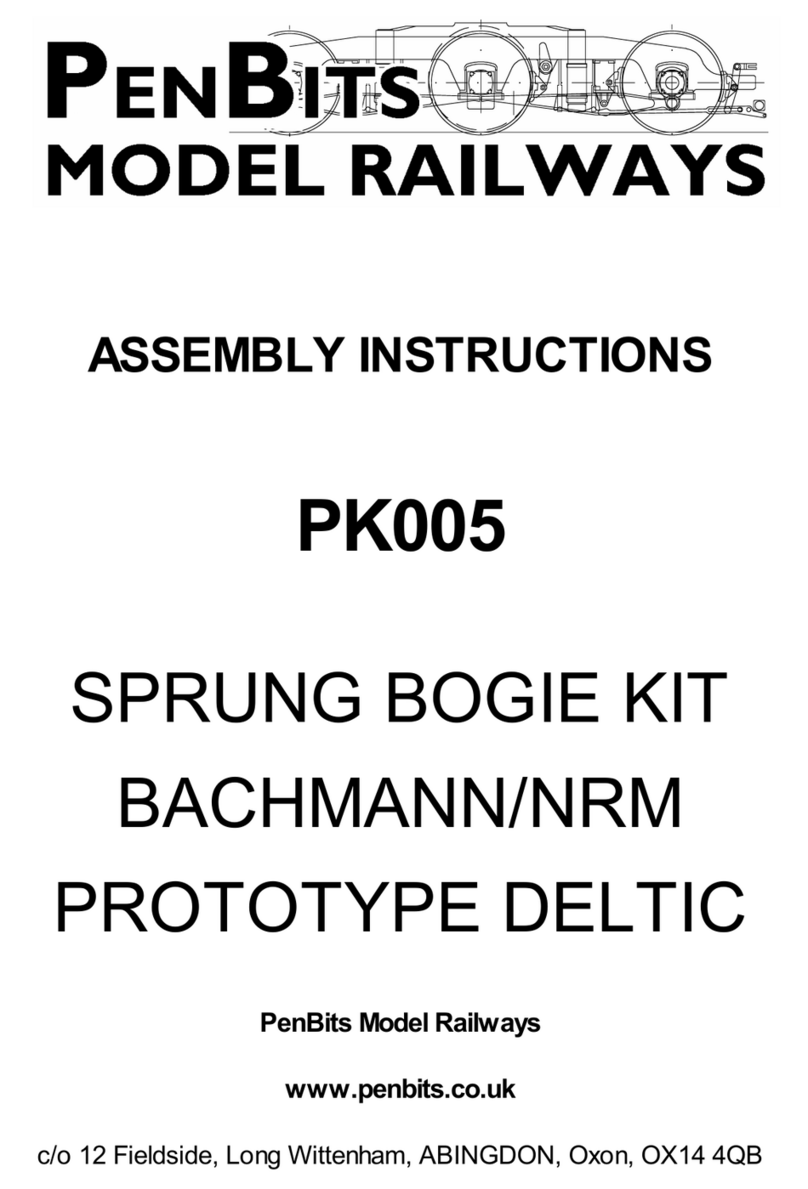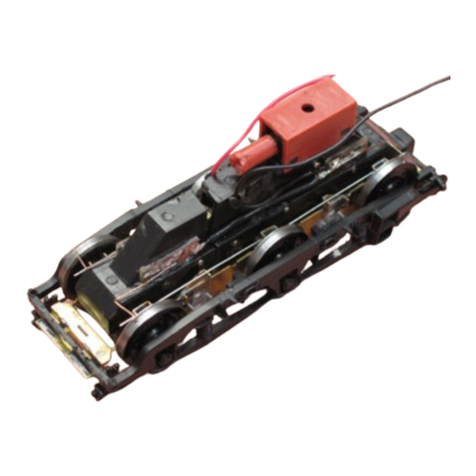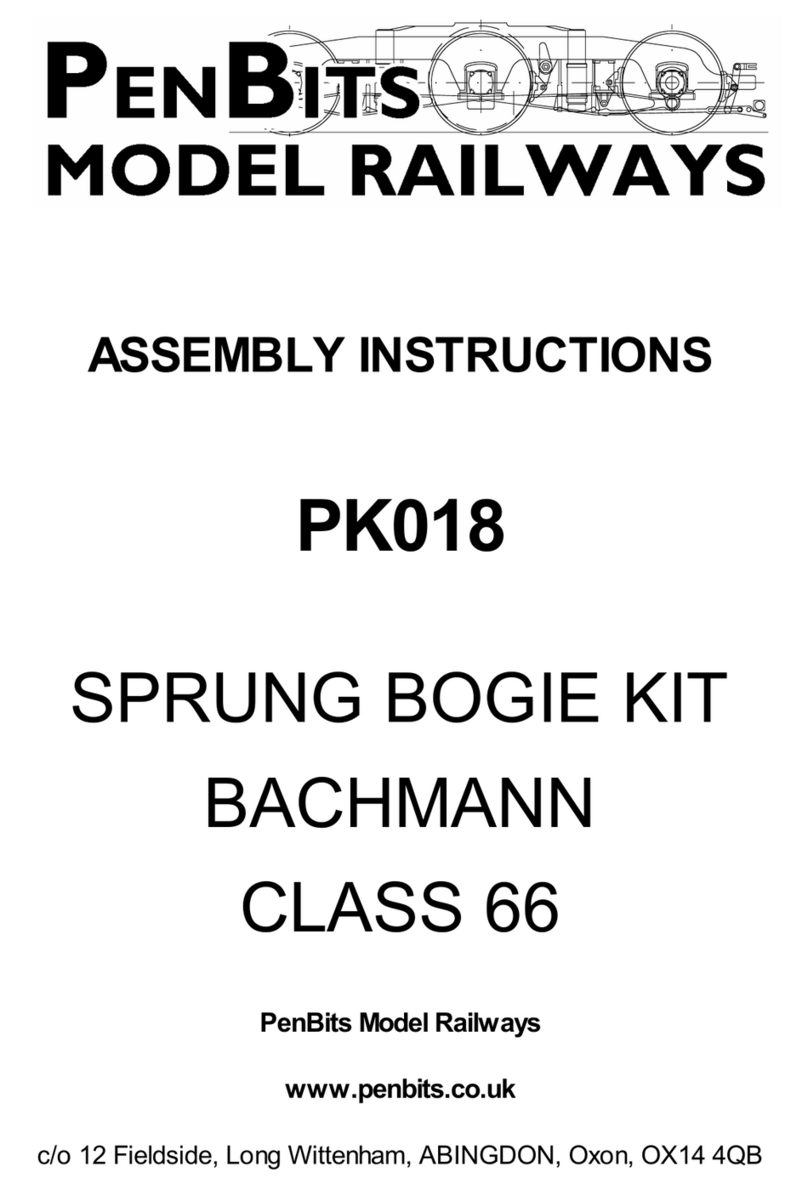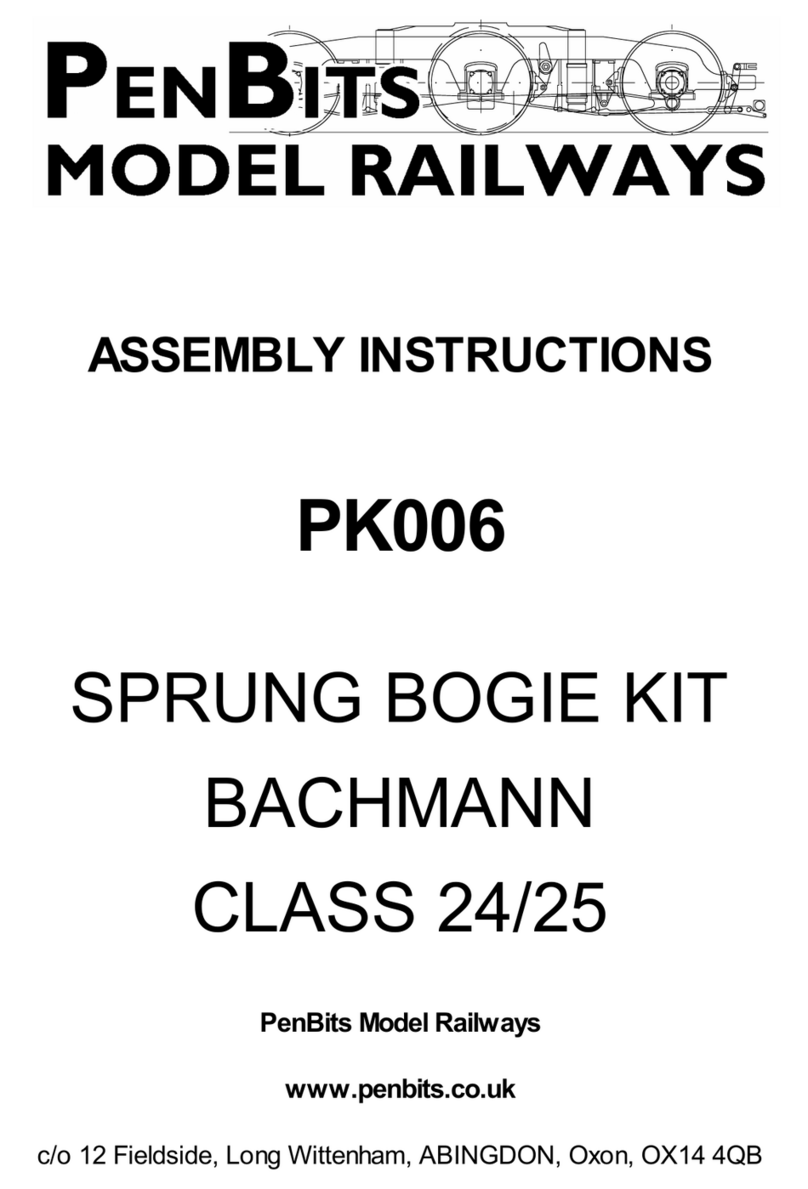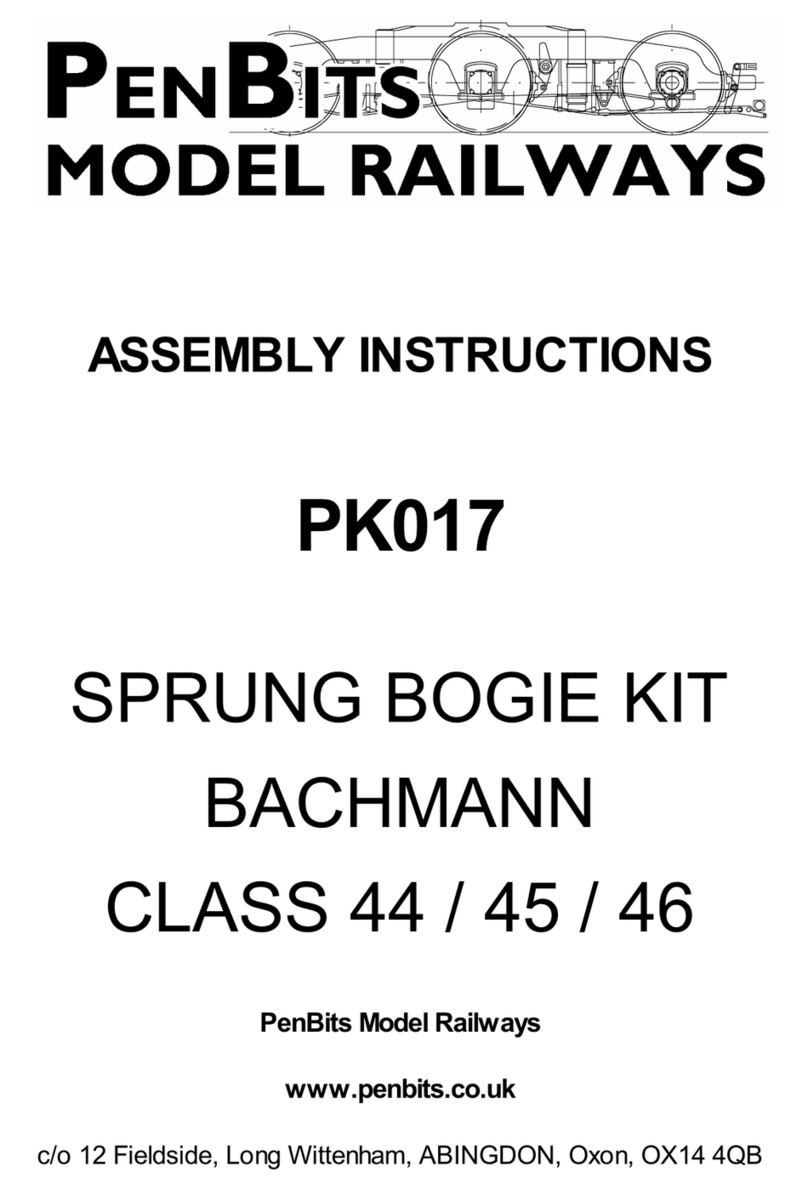Some of the parts of our kits are designed
to fit, perpendicularly, either into or
through slots in other parts. The slots are
intended to provide a loose sliding fit for
the other part. Because of variations in the
degree of etching (q.v., below), it is
possible that the fit will be looser or tighter
than ideal.
Check the width of each slot with a
piece of scrap etch before assembly,
preferably before folding the slotted part. If the scrap will not pass through, hold it in
pliers or a hand vice, as shown (though make sure the part is well supported), and
work it through the slot until the loose sliding fit is achieved. In tight spots, it is
possible to use a small drill held in a pin chuck as a file.
Degree of Etching
The etch is created for us by a third party industrial manufacturer using a process of
chemical erosion. The 'Degree of Etching', i.e. how long the metal sheet is left in the
chemical bath, is a variable which is set by the skill and judgement of the operator as
each batch of sheets is produced. That dictates that the sizes of the etched parts on
different sheets can vary, within a certain tolerance, around the nominally designed
values. The variation is more significant with the relatively thick materials, that we use
in the main structural parts of our kits, than it is with the thinner materials typically
used for detail parts.
The ideal degree of etching is indicated by the slots (see above), as manufactured,
being just slightly on the tight side of the easy sliding fit required. The range of degree
of etching which we deem to be acceptable is from a 'lighter' etch, in which the scrap
material has to be pushed through the slot quite firmly to achieve the clearance, to a
'heavier' etch, where the fit is a little loose. We have test built our kits from etches
across this range to confirm that they may be assembled successfully.
Cusps
The chemical erosion process works equally
from each side of the metal, resulting in the
edges of the etch having shaped 'cusps' as
in the diagram here. On edges which will be
visible on the finished model, it is good
practice to file the edges of the metal flat.
Many of the edges on our kits are hidden
from view.
Where edges form joints with other
components, on a 'lighter' etch the edges may need to be filed to a flat surface to
achieve a fit, whereas with a 'heavier' etch one might leave more of the cusps in
place. In places which can't be reached by a file, e.g. in acute corners of the etch,
the cusp may be pared away with a sharp knife.






